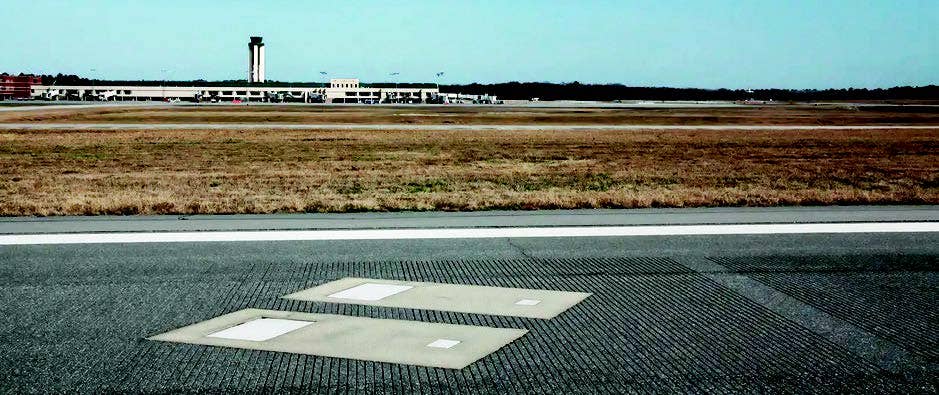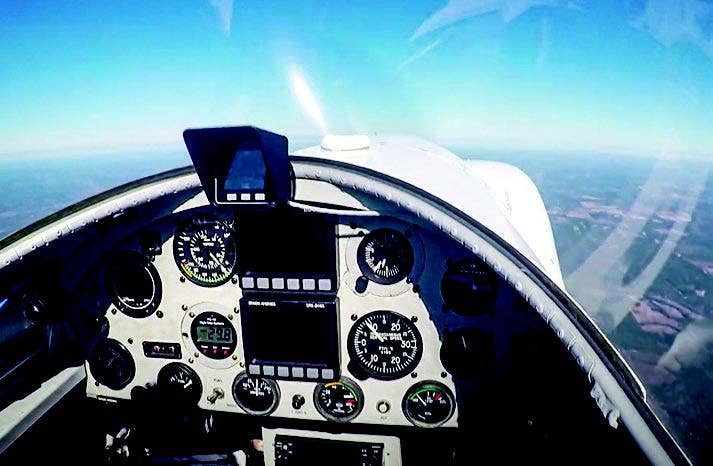Allure of International Flying Lies Across the Glittering Sea
If you guessed the primary draw of being an overseas airline pilot is those nice layovers, you’d be right.

You might suppose the primary draw of international
flying to be the layovers, and in the case of FLYING contributor Sam Weigel, you wouldn’t
be wide of the mark. [iStock]
Two weeks ago, I flew with John Pullen, the same amiable first officer I’ve mentioned twice in these pages already (“Bomb Cyclone,” March 2023; “Beyond the Uniform,” July 2023). He greeted me with a grin, a handshake, and a vow: “OK, no drama that gets me into FLYING Magazine again, I promise!” No problems there, I told him. After weeks of unceasing thunderstorms up and down the East Coast with air traffic chaos and endemic delays and cancellations, the forecast promised unusually smooth sailing for the next four days.
As we settled into the Boeing 737’s cozy cockpit and started to build our nests, I recounted some of the more maddening episodes of my last four-day tour and told John that after this trip my wife and I were headed to Italy for 11 days of sightseeing, hanging out on Lake Como, and attending the Formula 1 race at Monza. John, for his part, revealed that this pairing would be his very last outing in the senescent, unloved 737 as henceforth, he was departing for the sunlit uplands of the Airbus A330.
If you're not already a subscriber, what are you waiting for? Subscribe today to get the issue as soon as it is released in either Print or Digital formats.
Subscribe NowJohn’s pronouncement induced a flood of conflicting emotions. On one hand, I hate to lose good first officers who I actually know, and John is not the only cockpit companion who has recently succumbed to the glittering charms of an international widebody fleet. But on the other hand, he’s been at the airline for six years, and in these heady days of explosive advancement, that’s considered quite a long time indeed to hang out in the right seat of a narrowbody aircraft. John’s promotion to the A330 will yield him a considerable leap in both pay and quality of life, not to mention a welcome change of scenery. I’m glad for him, and a little jealous too. I was a Boeing 757/767 FO for four years, and the fleet took me to five continents. I miss that flying. I’d like to do it again.
To pilots who haven’t done both, the differences between domestic and international airline flying must seem a bit frivolous, perhaps even ego driven: There is the prestige and romance of jetting across oceans versus the workaday squalor of flogging aging “little” airplanes up and down interstate corridors three or four times a day. To be sure, there is absolutely an element of that. Rolling down the runway in a 370,000-pound airplane, lifting off with ponderous ceremony, and embarking on a transoceanic journey of some 4,000 miles always gave me a really warm, stirring sense of contented excitement, a feeling of setting off on a grand adventure. Few domestic routes impart such a poignant sense of wonder. And to be sure, friends and strangers are always more interested to hear about your exploits in Barcelona than a 12-hour layover in Cleveland.
Aesthetics aside, though, there are real distinctions in the working environment between domestic and international fleets. “It’s like a whole different airline,” goes the common refrain. Things are far more relaxed, much more “gentlemanly” to use an archaic but apropos term. We have only one leg per duty period on which to concentrate our energies. There are three pilots to share the load (four on flights of more than 12 hours). We show up at the airport 90 minutes or more before departure and have all the time in the world to go through our preflight duties. Dispatch usually completes the release well ahead of schedule and is quite proactive in heading off potential problems. Likewise, there are multiple gate agents plus a supervisor to ably handle most passenger issues in conjunction with the purser. In domestic flying, it often seems that the captain is the default troubleshooter. With international operations, very few problems make it forward of the cockpit door.
With an augmented crew of three pilots, you spend one-third of the cruise time absent from the flight deck, resting on your designated break. Long flights are rather shortened by being broken up into thirds as pilots cycle in and out. I found that most international flights of eight or 10 hours practically flew by, in comparison to five-hour domestic transcontinental flights that seem to drag on forever. It helps that you change out cockpit companions every three hours or so, keeping conversation fresh. Even if you can’t stand the person—and I’ve found maybe two or three of these in 19 years of airline flying—you only need to stew in silence for a few hours before being relieved.
Relief pilot is not a predesignated position at my airline. Theoretically, the captain assigns duties at the beginning of the trip, but in practice they will usually fly the first leg and let the two first officers hash out the rest among themselves. The relief FO normally takes the first rest break and then relieves the pilot flying (second break) and pilot monitoring (third break) in turn. This made it an unpopular position on eastbound trans-Atlantic legs, where first break often coincides with a circadian high and an active meal service, making for difficult rest (most of our 767s lack a bunk room like the A330; we use a first-class seat with a curtain). As a lifelong flexible sleeper, I usually volunteered for relief duties on these flights, and, besides the gratitude of my fellow FOs, was often rewarded with a flying leg on the westbound return.
I took a lot of pride in being a good relief pilot, especially during high-workload periods at busy international airports, where a sharp relief crew can be worth its weight in gold. You see a ton from the jumpseat and can often help the flying pilots head off trouble before it ever begins. My crowning moment came during a takeoff from London-Heathrow (EGLL), when the captain’s oxygen mask started spontaneously free flowing, but the sound was masked by unusually loud packs. Just after rotation, I realized the source of the noise and, throwing off my harness and headset, flew across the cockpit to smack the errant mask into submission. We all glanced up at the crew oxygen gauge; it was barely above the minimum, saving us from a mandatory divert. The captain bought the layover beers that night.
You might suppose the primary draw of international flying to be the layovers, and in my case you wouldn’t be wide of the mark. I took full advantage of 24- to 48- hour Europe layovers and 36-hour South American interludes, cramming in as much adventure as was prudent. It’s instructive that I’ve written about many international layovers in these pages—flying a microlight in Germany and a classic Robin taildragger in France,
hang gliding in Rio, visiting a World War I aerodrome in Italy and a flying boat museum in Ireland—while spilling minimal ink over their domestic counterparts.
I also enjoyed the international crew dynamic. It’s not unusual for all three pilots and a majority of the flight attendants to at least meet for happy hour, if not for dinner or a night on the town. This is much rarer on the domestic side at my airline, though I’ve put good effort into rectifying that since upgrade, with better-than-average results.
- READ MORE: A Primer on Pilot Certificate Conversions
A lot of my compatriots, however, don’t necessarily care if they quaff Maibock in Munich or Miller in Milwaukee, and an equal number profess indifference to the cabin crew’s participation, or lack thereof, in layover fun. The real draw of international flying, for most, is that it’s supremely efficient. In John’s new category of Seattle A330, even junior pilots can easily cram a full month’s flying into only 12 days, leaving the rest free for family, hobbies, or second careers or businesses. The trips are also very commuter-friendly, with late report times and early releases. On international fleets, there’s very little the company can legally do to reschedule you to cover broken trips. One need not fear storms up and down the East Coast. At worst, you go home early with full pay.
All of which explains why the international fleets go insanely senior at my airline. John is just now able to hold A330 first officer status, but he could have held Seattle 737 captain more than two years ago. Likewise, I would be slightly more junior as an A330 FO than I am as a 737 captain. Despite that—and the prospect of a 20 percent pay cut—the idea of taking a downgrade looks attractive each time I see the A330’s monthly bid package.
Pretty much my entire career—and my life—has been divided up into roughly five-year chunks. Whenever I do anything for that long, I tend to become bored and knock over the house of cards to see what I can build next. I’ve been a 737 captain for three and a half years, and while I’m still reasonably engaged, I’ve started to eye my next move. The most optimistic projections show that I might be able to hold A330 captain in six years (be still my heart). I probably ought to go “learn French” on an Airbus product in the meantime, which in Seattle means A320 captain or A330 FO.
Which to choose? I won’t lie. I do enjoy flying with “my own favorite captain” every single week, and to be stripped of that fourth stripe does involve a certain subjugation of the ego. On the other hand, I’m writing this column at a table overlooking the Grand Canal in sunny, beautiful Venice, sipping an Aperol spritz and remembering a time not so long ago when this was my everyday work life. It’s tempting, very tempting, to go back to that. We’ll see, but John and I may yet fly together again somewhere across the glittering sea.
This column first appeared in the November 2023/Issue 943 of FLYING’s print edition.

Subscribe to Our Newsletter
Get the latest FLYING stories delivered directly to your inbox







